We are dedicated to providing exceptional custom drywall installation and taping services to ensure a smooth and polished finish for your walls and ceilings. Our skilled professionals are committed to delivering high-quality workmanship that meets your specific needs and exceeds your expectations. Whether it’s a residential or commercial project for drywall and taping, we’ve got you covered!
GET IN TOUCH
Schedule a free consultation
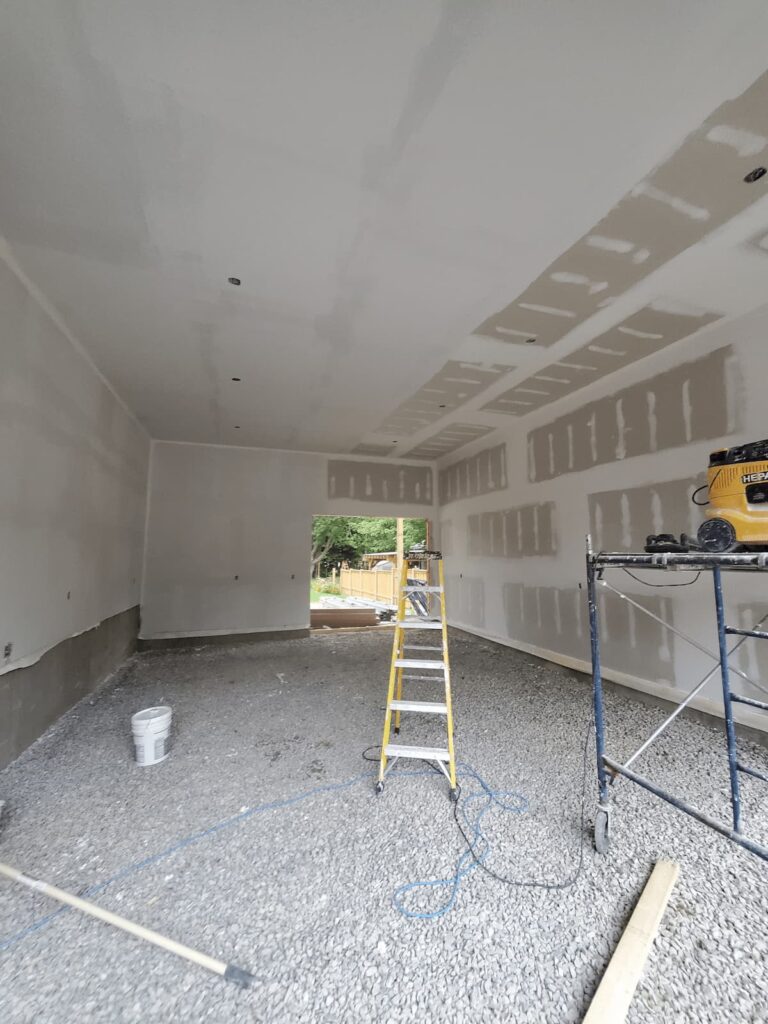
Drywall Installation
Our expert team specializes in precise and efficient drywall installation for both new construction and renovations. We meticulously measure, cut, and secure drywall sheets to create a seamless surface for your interior spaces.
Drywall Repair and Patching
Accidents happen, and we’re here to help! Our experienced technicians are skilled in repairing any drywall damage, including holes, cracks, dents, or water damage. We’ll restore your walls to a smooth and flawless finish.
Drywall Finishing and Taping
Achieving a perfect finish is an art, and our professionals excel at it. We use industry-leading techniques and materials to tape and finish drywall, resulting in a surface that’s ready for priming and painting. The finishing process ensures a uniform and aesthetically pleasing appearance.
Texture and Specialty Finishes
If you desire a textured or unique finish for your walls or ceilings, we offer various texture options to match your preferences. Our team can create textures like orange peel, knockdown, popcorn, or any other custom finish you have in mind to add character to your space.
Why Choose Us
- Experienced Professionals: Our team consists of highly skilled and experienced professionals with a proven track record of delivering exceptional drywall and taping services.
- Quality Materials: We use top-quality materials and tools to ensure durable, long-lasting results that stand up to the test of time.
- Customer Satisfaction: Your satisfaction is our top priority. We work closely with you to understand your vision and ensure that the final product meets your expectations.
- Attention to Detail: We pay meticulous attention to every detail during the drywall installation and taping process, leaving no room for imperfections.
- Timely Completion: We value your time and strive to complete projects within the agreed-upon timeframe, without compromising on quality.
Contact Us
Ready to transform your space with our drywall and taping expertise? Reach out to us today to discuss your project, get a quote, or schedule a consultation. We look forward to working with you to create stunning, flawlessly finished walls and ceilings that enhance the beauty of your home or business.
We also offer:
Custom Drywall Solutions: Enhancing Your Home’s Aesthetics and Functionality
Custom drywall has gained popularity in recent years as a means of adding a unique and personalized touch to homes and commercial spaces. It involves creating custom shapes, designs and finishes that suit the aesthetics and functional needs of a space. As opposed to traditional drywall installation, custom drywall caters to specific preferences and aims to bring a visionary concept to life, thus maximizing the potential of any living or working area.
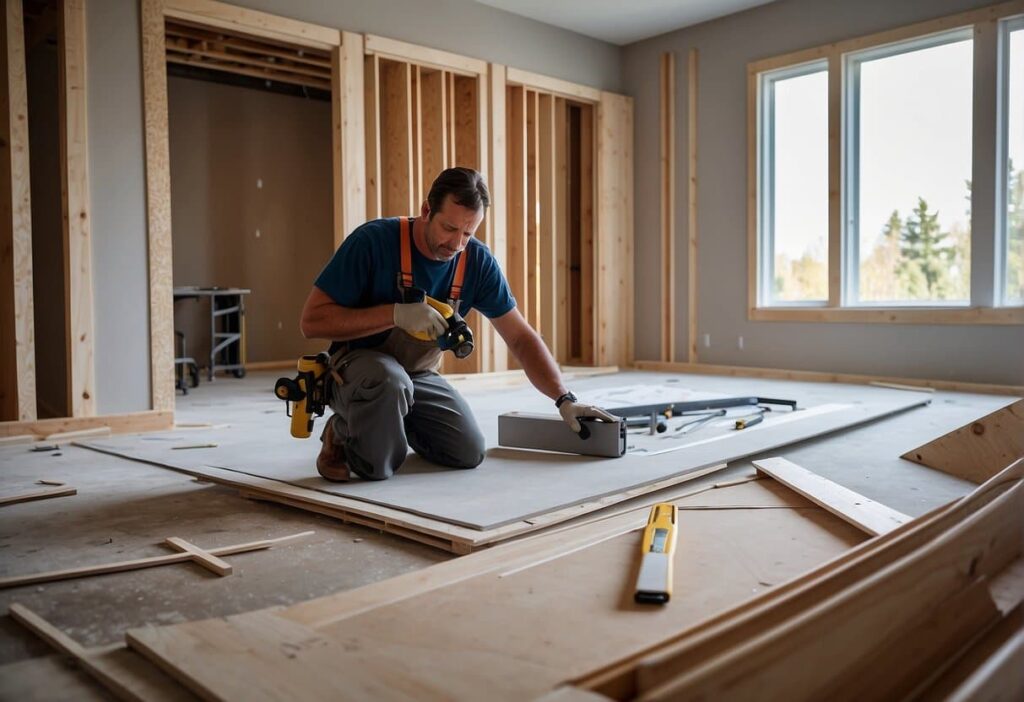
There are various techniques and materials available for custom drywall, including curved walls, archways, coffered ceilings, and special texturing. As a result, property owners have the flexibility to explore a wide range of design possibilities catered to their preferences. Skilled contractors in this field are proficient in creating innovative layouts and implementing them in the most efficient way, ensuring that homeowners get the desired customizations without compromising quality or structural integrity.
The benefits of custom drywall extend beyond aesthetics, as it can also impact the overall functionality of a space. For instance, incorporating soundproof drywall can create a serene environment in home offices, media rooms or bedrooms, while humidity-resistant materials can prolong the lifespan of drywall in moisture-prone areas like bathrooms and kitchens. This adaptability demonstrates that custom drywall is not only a design choice but also a purposeful consideration to optimize any space.
Basics of Custom Drywall Installation
Measuring and Cutting
Begin by accurately measuring the space where the custom drywall will be installed. It is essential to take precise measurements to ensure a proper fit. Use a tape measure and note the dimensions of the space, including height, width, and depth.
When cutting the drywall, use a sharp utility knife and a straight edge. To make a clean cut, first score the front paper surface along your measured lines. Next, snap the drywall along the scored line and cut through the back paper.
Securing to Framework
Before attaching the drywall, it’s important to have a strong and level framework. Typically, custom drywall is secured to a wood or metal framework using drywall screws. Follow these steps:
- Lift the custom-cut drywall piece into place.
- Secure it to the framework using a drill or screw gun with a drywall bit.
- Drive the screws at designated intervals (usually 12-16 inches apart) along each stud.
- Make sure the screw heads are slightly below the paper surface without tearing it.
Finishing and Sanding
For a seamless look, you will apply joint compound and tape to the seams where drywall pieces meet. Follow this process:
- Apply a thin and even layer of joint compound with a 5-6 inch drywall knife over the seam.
- Press the drywall tape into the compound, centering it over the seam.
- Apply another layer of joint compound over the tape, feathering the edges to blend seamlessly.
- Allow the compound to dry for 24 hours or as instructed on the product packaging.
After the compound is dry, sanding is necessary to achieve a smooth finish. Use a sandpaper or sanding block with a fine grit (120-150 grit) and gently sand the dried joint compound until it is smooth to the touch. Avoid over-sanding to prevent damage to the paper surface.
By following these steps, you’ll be well on your way to a successful and professional-looking custom drywall installation.
Design Options for Custom Drywall
When it comes to custom drywall, numerous design options are available, allowing you to create a unique look for your space. This section will discuss two main categories of custom design options: Textures and Finishes and Curves and Architectural Features.
Textures and Finishes
Custom drywall textures offer endless possibilities to achieve a unique and stylish look. Here are some popular options:
- Smooth finish: A classic choice that provides a sleek, clean appearance.
- Knockdown texture: A more subtle texture, created by applying a thin layer of joint compound and then gently “knocking down” the surface with a trowel.
- Orange peel texture: Named for its resemblance to the skin of an orange, this texture is created by spraying a mix of diluted joint compounds onto the drywall surface.
- Skip trowel texture: A hand-applied technique that gives a more rustic appearance, achieved by applying a thin layer of joint compound with a trowel in various directions.
In addition to textures, you can choose from several finish options to further customize your drywall. Some popular choices include:
- Paint: A versatile and economical option, available in countless colours and sheens.
- Wallpaper: Offers numerous patterns, textures, and colours to create a distinctive look.
- Venetian plaster: An elegant, polished finish that adds depth and sophistication to the drywall surface.
Curves and Architectural Features
Another way to customize your drywall is by incorporating curves and architectural features. Some popular design elements include:
- Arches: Can be used to frame doorways, windows, or as a decorative element in a wall.
- Coved ceilings: A curved transition between the wall and ceiling, often accompanied by crown molding or decorative trim.
- Coffered ceilings: A grid of intersecting beams that create a pattern of recessed panels, often featuring decorative trim or molding.
- Accent walls: A standout wall featuring a unique texture, finish, or color, often used to draw attention to a particular area of a room.
Custom drywall creations allow for endless possibilities, giving homeowners and designers the opportunity to create a truly unique space. From intricate textures and finishes to stunning architectural features, custom drywall can transform any room into a work of art.
Essentials of Drywall Materials
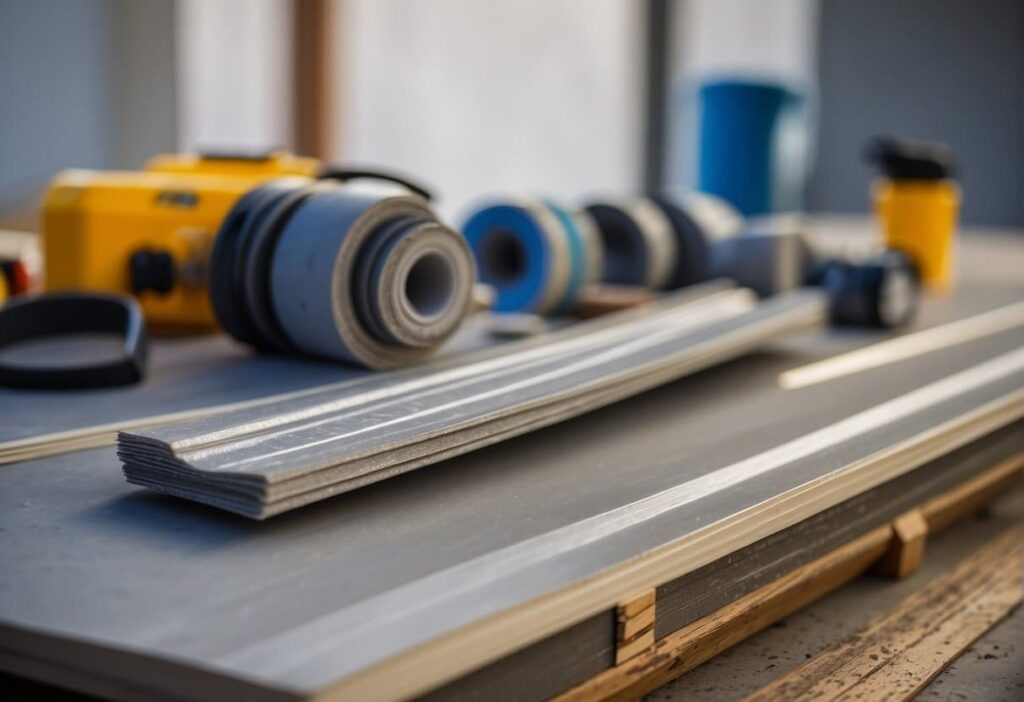
Types of Drywall
There are several types of drywall available in the market, each offering unique characteristics suitable for specific purposes. Here are four common types:
- Regular Drywall: This is the standard and most affordable option, generally used for residential and commercial spaces. It comes in various thicknesses, typically between 1/4-inch to 5/8-inch.
- Moisture-Resistant Drywall: Also known as green board, this type of drywall is designed to resist moisture and is ideal for use in bathrooms, kitchens, and laundry rooms.
- Fire-Resistant Drywall: This drywall contains special additives to increase its fire resistance, making it a suitable choice for building codes that require additional safety measures.
- Soundproof Drywall: Made with sound-dampening materials, this type of drywall is perfect for reducing noise transmission between rooms or for spaces that demand a quieter environment.
Choosing Quality Materials
Picking the right drywall materials is essential for achieving a durable and long-lasting result. When selecting drywall materials, consider the following factors:
- Thickness: The standard thickness for walls is 1/2-inch, while ceilings typically require 5/8-inch thick drywall for additional rigidity.
- Panel Size: Drywall is available in various panel sizes, with the most common being 4 feet by 8 feet. Opt for larger panels to reduce the number of seams, thus achieving a smoother finish.
- Joint Compound: Choose a premium joint compound to ensure a smooth, flawless surface. There are several types available, such as pre-mixed, lightweight, and all-purpose compounds.
- Fasteners: Use appropriate fasteners, like drywall screws, to secure the panels to the wall structure. High-quality screws provide better holding power and minimize the risk of “popping” or loosening over time.
In summary, understanding the different types of drywall and selecting the right materials based on your specific needs are crucial steps to achieve a successful custom drywall outcome.
Tools and Equipment for Drywall Work
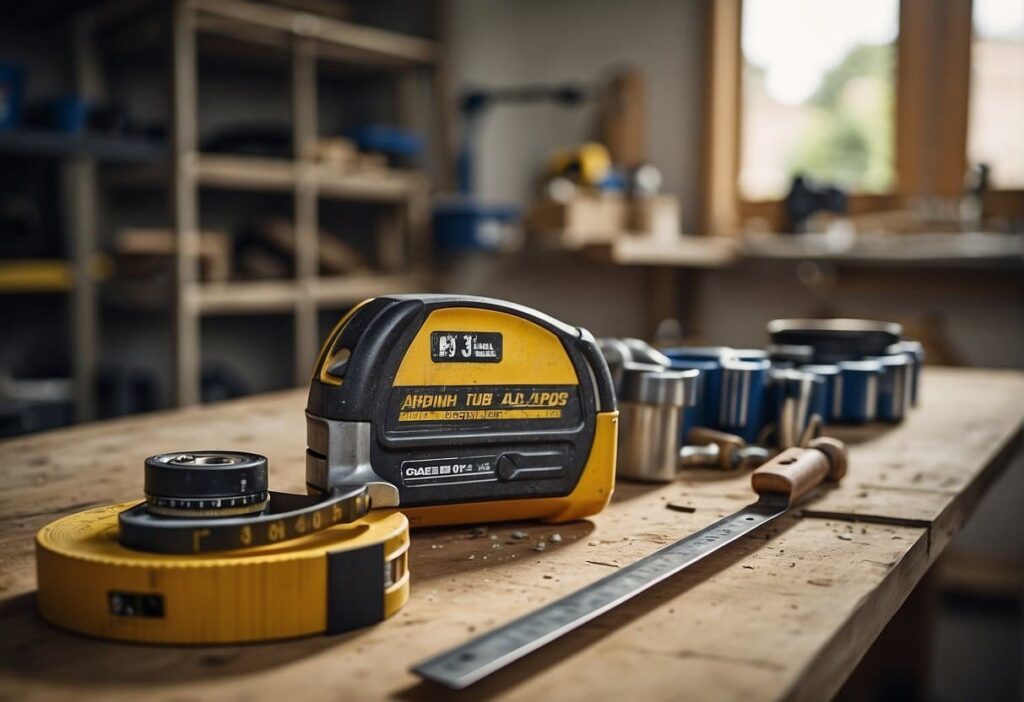
Hand Tools and Accessories
When working with drywall, having the right tools and accessories for the job is essential. These help in measuring, cutting, and installing the drywall panels with precision. Some important hand tools include:
- Utility knives: For scoring and cutting drywall panels
- T-squares: To ensure accurate measurements and straight cuts
- Drywall saws: For cutting out areas like electrical outlets
- Drywall hammers and nails: For fastening panels to framing
- Tape measures: To take accurate measurements for cuts
- Joint knives and taping knives: For applying and smoothing joint compound
In addition to these tools, accessories like drywall screws, joint tape, and corner beads are needed to create seamless walls and edges.
Power Tools and Safety Gear
Power tools can make a significant difference in the efficiency and quality of drywall work. Some of the commonly used power tools in drywall work include:
- Drywall screw guns: For quickly and securely fastening drywall panels to framing
- Rotary cut-out tools: For precision cutting of drywall panels around outlets, windows, and doors
- Drywall lift:* For assisting in lifting and positioning heavy drywall panels onto walls or ceilings
It’s essential to use safety gear when working with drywall, as it can be hazardous without proper protection. Here are some safety items to consider:
- Safety glasses: Protect eyes from dust and debris
- Dust masks or respirators: Guard against inhaling drywall dust
- Gloves: Shield hands from cuts and abrasions
- Work boots with toe caps: Offer protection and support during lifting
By using the appropriate tools, equipment, and safety gear for custom drywall work, professionals and DIY enthusiasts alike can achieve excellent results, ensuring a visually appealing and long-lasting installation.
Advanced Techniques in Custom Drywall

Creating Seamless Joins
In custom drywall, seamless joins are a key factor in achieving a visually appealing and professionally finished look. There are a few advanced techniques to accomplish this:
- Butt joints: Align the tapered edges of the drywall sheets and apply joint compound. Then place a piece of paper tape over the join, followed by another layer of joint compound. Allow the compound to dry, sand, and apply additional layers as needed.
- Floating butt joints: This method involves installing drywall sheets slightly apart, allowing for a gap between sheets. An appropriate joint compound is used to fill the gap, and the paper tape is applied. Once dried, sand and apply additional layers of joint compound if needed.
- Staggered joints: Plan the placement of drywall sheets in a way that avoids creating long, continuous joint lines. This helps distribute the stress points and makes the joins less noticeable.
Innovative Texturing Methods
Another important aspect of custom drywall is creating visually engaging surfaces with innovative texturing methods. Some popular techniques include:
- Knockdown texture: This texture is achieved by applying a compound mixture to the surface, then knocking it down with a trowel or texturing knife. The result is a three-dimensional pattern with peaks and valleys.
- Orange peel texture: Similar in appearance to the skin of an orange, this texture is created by applying compound with a spray gun and adjusting the nozzle according to the desired thickness of the texture.
- Venetian plaster: Made from lime, marble dust, and pigments, this technique creates a smooth, lustrous finish with minimal texture. It is applied using a trowel, building up multiple layers and burnishing to achieve the desired shine.
- Custom carving: This technique involves carving patterns or designs directly into the wet joint compound before it dries. This can be done freehand or using stencils, offering endless possibilities for personalized designs.
In summary, advanced techniques in custom drywall can elevate the appearance of interior spaces with seamless joins and unique textures. By mastering these methods, professionals can add distinctive elements to their projects while maintaining high-quality results.
Troubleshooting Common Drywall Issues
Fixing Popped Nails and Screws
Popped nails and screws are a common drywall issue most homeowners face. It usually occurs when the nail or screw loses its grip on the framing and starts to protrude. To fix it, follow these steps:
- Locate the popped nail or screw: Look for any prominent bumps on the wall or ceiling.
- Remove the loose nail or screw: Carefully remove the offending nail or screw and reattach it, making sure it’s securely fastened. Note: If the framing is damaged, utilize a new fastener at least 1 to 2 inches away from the original hole.
- Patch the hole: Apply a thin layer of joint compound (mud) over the fastener, let it dry, and repeat as necessary. Finally, sand the area until it’s smooth.
Repairing Cracks and Holes
Cracks and holes in your drywall can detract from the appearance of your home. Repairing them can be simple with the right tools and technique.
- Repairing cracks: Small cracks can be filled with a pre-mixed patching compound or paintable caulk. Apply the compound or caulk, let it dry and sand it smooth. For larger, deeper cracks, use a setting-type joint compound. Apply it in two to three thin layers, letting each one dry before applying the next, and sand the final layer smooth.
- Repairing small holes: Clean the edges of the hole, apply a patch (available at home improvement stores), and then cover it with joint compound. Spread the compound evenly, feathering out the edges, and then sand it smooth.
- Repairing large holes: Cut a patch (plasterboard or drywall) that’s slightly bigger than the hole. Apply a layer of joint compound around the hole, and press the patch into it. Cover the patch with joint compound, smoothly blending it into the surrounding area, and then sand it.
By following these easy steps and guidelines, you’ll be able to address common drywall issues, leaving your walls looking like new again.
Regulations and Compliance

Building Codes
When working with custom drywall, it’s essential to adhere to applicable building codes. These codes vary based on location and aim to ensure the safety and structural integrity of buildings. Key elements to consider include:
- Thickness: In general, residential walls require a minimum thickness of 1/2-inch drywall, while ceilings and commercial buildings may require a 5/8-inch thickness.
- Fastener spacing: Maintaining proper distances between fasteners like screws and nails is crucial to preventing cracks and maintaining stability.
- Drywall type: Different types of drywall serve different purposes, such as moisture-resistant drywall for bathrooms and mold-resistant drywall for basements.
It’s essential to consult local building codes and inspectors to ensure compliance with the area’s specific requirements.
Insulation and Fire Ratings
Custom drywalls must meet specified insulation and fire ratings to limit fire spread and maintain energy efficiency. Consider the following:
- Fire-rated drywall: Also known as Type X drywall, it contains a higher concentration of non-combustible materials and is designed for use in walls, ceilings, and partitions where fire resistance is needed.
- Soundproofing: Sound transmission class (STC) ratings determine drywall’s ability to minimize sound transfer between spaces. Higher STC ratings typically require thicker and denser drywall.
- Thermal insulation: Insulation value, or R-value, measures a material’s resistance to heat flow. For optimal energy efficiency, choose drywall and insulation combinations that meet or exceed local building code requirements.
In summary, when working with custom drywall, it is crucial to take regional building codes and requirements into consideration. Ensuring adherence to these regulations helps to create safe, efficient, and long-lasting buildings.
Environmental Considerations
Sustainable Materials
When considering custom drywall for a project, it is essential to incorporate sustainable materials, not only to reduce environmental impacts but also for long-term energy and cost benefits. Common eco-friendly materials include:
- Recycled Gypsum: Recycled gypsum can be used to create new drywall, minimizing waste and lowering the demand for raw materials.
- FSC-Certified Wood: Wood sourced from responsibly managed forests can ensure a sustainable supply without destroying natural habitats.
- Low-VOC Adhesives and Sealants: Low-VOC adhesives and sealants reduce indoor air pollution and contribute to better overall air quality.
Furthermore, it is essential to select insulation materials that complement the sustainable benefits of custom drywall. Examples of environment-friendly insulation options are cellulose, sheep’s wool, and mineral wool.
Recycling and Waste Management
An essential aspect of environmental considerations for custom drywall is recycling and waste management. During the construction and demolition process, plenty of waste is generated. The table below illustrates practical steps for better waste management:
| Action | Benefit |
| Sort and separate waste materials | Facilitates recycling and disposal |
| Store waste materials in dedicated containers | Prevents cross-contamination with other materials |
| Reuse any suitable materials | Reduces overall waste generation |
Furthermore, it is crucial to collaborate with local recycling facilities that accept drywall waste. A significant portion of the drywall can be recycled and processed back into new products, reducing the need for raw materials and the energy associated with manufacturing.
In conclusion, integrating sustainable materials and effective waste management solutions can greatly reduce the environmental impact of custom drywall. By adopting these practices, constructors and building owners can minimize harm to the environment, promote eco-friendly habits, and create genuinely sustainable structures.
Hiring a Drywall Professional
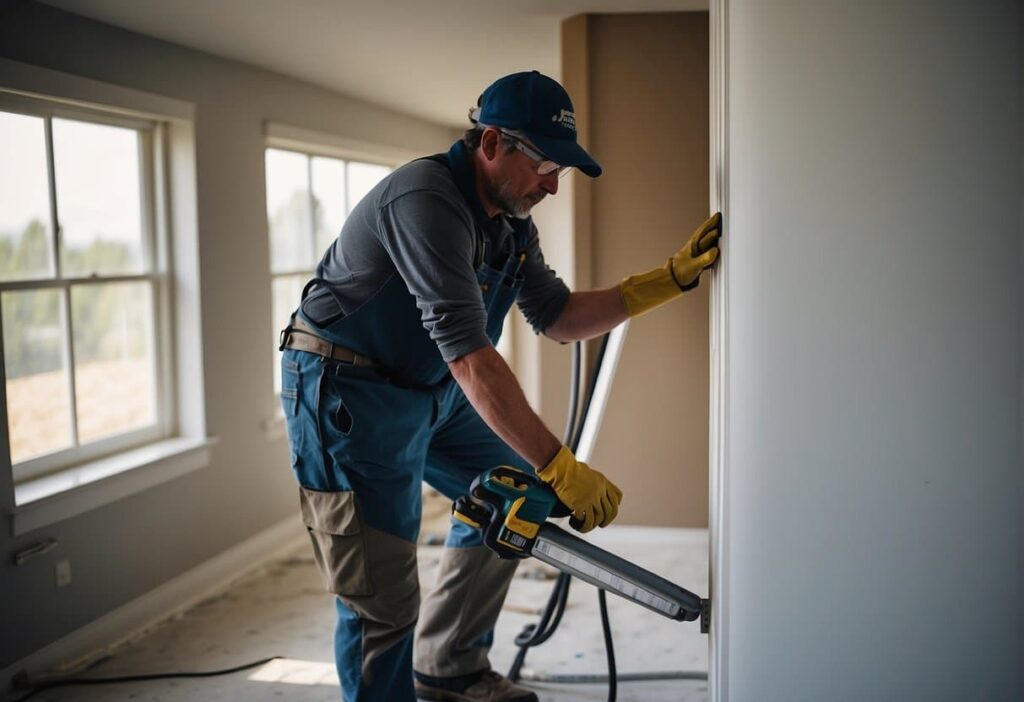
Selecting a Contractor
When looking for a drywall professional, it is important to consider the following factors:
- Experience: Choose a contractor with ample experience in custom drywall projects.
- License: Ensure the contractor holds a valid license and insurance coverage.
- Reviews: Read online reviews and ask for references to gauge the quality of their work.
A great starting point is to:
- Ask for recommendations from friends or family members.
- Search for reputable professionals online or via local directories.
- Request quotes from several contractors to compare their services.
Understanding Cost Estimates
It’s essential to understand the components of a drywall professional’s cost estimate. Here are the main factors to consider:
- Labour costs: This usually includes the contractor’s hourly rates or total project cost.
- Materials: The type and amount of drywall used, as well as additional items like joint compound, screws, and tape.
Below is a sample table that breaks down the pricing of a drywall project:
| Component | Cost Range | Notes |
| Drywall Panels | $10-$60/sheet | Prices vary based on the size, thickness, and quality |
| Joint Compound | $7-$15/bag | Depending on the brand and amount needed |
| Screws | $6-$10/box | |
| Tape | $2-$5/roll |
Make sure to clarify any questions regarding the cost estimates and payment schedules with the contractor. This ensures there are no surprises and allows for a smooth and stress-free custom drywall project.
Frequently Asked Questions
How do I find reputable drywall contractors in my area?
One can find reputable drywall contractors by asking for recommendations from friends, family, or neighbours. Searching online directories and review websites can also provide leads on reliable professionals. Always verify the contractor’s license, insurance, and work history before hiring.
What are the key factors to consider when comparing drywall installation services?
When comparing drywall installation services, it is important to consider factors such as price, experience, quality of materials, and the contractor’s reputation. Additionally, the level of customer service and clear communication of the project scope and timeline should be taken into account.
Can drywall be customized for non-standard wall shapes or unique design features?
Yes, drywall can be customized to accommodate non-standard wall shapes or unique design features. Skilled contractors can cut and install drywall to fit curves, arches, and other unusual architectural elements. Discuss specific requirements with the drywall installer to ensure the desired outcome.
What is the usual turnaround time for a custom drywall project?
The turnaround time for a custom drywall project depends on factors such as the project’s size, complexity, design requirements, and availability of materials and labour. Typically, smaller projects can be completed within a few days, while larger or more complex installations may take several weeks. Communicate with the contractor for a more accurate timeframe based on your specific needs.
How do customer reviews impact the selection of a drywall installation provider?
Customer reviews can significantly impact the selection of a drywall installation provider. Positive reviews generally indicate satisfaction with the work quality, professionalism, and reliability of the contractor. Negative reviews can serve as a warning for potential problems or dissatisfaction. It is advisable to read multiple reviews and take note of potential trends in the contractor’s performance before making a decision.
Are there specific advantages to choosing a local drywall company over a national chain?
Selecting a local drywall company can offer certain advantages over choosing a national chain. Local companies often have a better understanding of the specific building codes, regulations, and climate considerations for the area. Additionally, supporting a local business can help to boost the local economy and create a stronger sense of community.